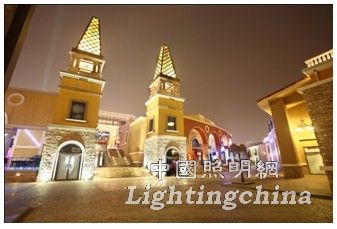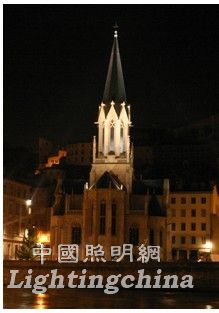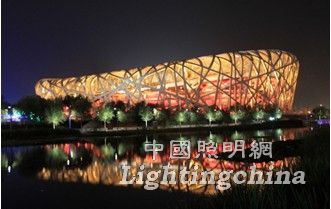1 Introduction During the day, the sun shines on the building, through the changes of light and shadow, shaping the architectural form and highlighting the architectural culture; at night, the night lighting illuminates the architectural form and reflects the architectural culture. With the increasing number of night activities, the rapid development of nightscape lighting has gradually become an important part of architectural culture. This article focuses on the issue of expressing architectural cultural characteristics through night lighting. Architectural night lighting is the use of artificial light sources to use the building as a carrier for artistic expression and objectification. The performance carrier of architectural night lighting is mainly architecture, and the expression medium is light. American architect Raymond Hood coined the term "Architecture of the Night", emphasizing that the appearance of a building at night should be one of the internal factors in the initial design of the building, not an unplanned Additives. The concept of architectural culture is relatively macroscopic and can be understood from two levels and two categories. Among them, the two levels are material function and mental function. Material functions include many things, such as space shape, size, robustness, economy, physical elements, equipment elements, etc. The cultural meaning of how to meet the most basic level of demand. The spiritual function of architectural culture is the demand for advanced mental activities of people, or an architectural connotation in the relationship between people and society. Specifically, it is religion, ethics, and aesthetics. Religious functions are reflected in buildings such as churches, temples, and monasteries. These buildings focus on creating an atmosphere that allows you to believe in it, attach to it, and then enjoy yourself. The ethical order function is expressed in the height of the house, the level of color, the level limit of the details, and the layout of the space. A deeper level is aesthetics. Aesthetics is self-expression from the satisfaction of function to architecture. The two categories are historical and geographical, and architectural culture differs between these two categories. Most of the existence of architecture is historical, that is, the existence of a sudden change in one or more social unrealistic societies. For the architectural culture of the historical style area, it not only includes the “tangible culture†of the architectural group entity, but also the “intangible culture†contained in it, such as the values, organizational structure, interpersonal relationships, customs and habits formed by people living here. There is a clear time and space language. The architectural culture is regional in nature. The basic reasons are as follows: First, the material factors of the region, that is, local materials, local conditions, and geographical information factors. In addition, different climates are also one of the reasons for the geographical differences in buildings. Under the natural light that changes with time, the image of the building changes, and it is in this constant change that light reshapes our world. Compared with natural light, artificial light has stronger plasticity, controllability, and a variety of light colors. Under the night, light from different angles hits the building, visually producing different and daytime effects, breaking the light and shadow mode produced by natural light, and having a stronger contrast of light and shadow, making the features of the building not fully visible during the day. Therefore, the night scene lighting has great flexibility and diversity for shaping the buildings under the night sky and the surrounding space environment, which can enhance the image of the building at night, with strong logo and strong expressiveness. Generally speaking, because of the different characteristics of the building, such as its own function, its environment, cultural connotation, architectural shape, material of the outer veneer, color, proportional relationship, detail decoration, etc., it determines the difference of night lighting. In the specific lighting design, the appropriate lighting method should be selected in combination with the nature and character of the building and its environment. Night lighting has the characteristics of natural light, has gradually become a part of the architectural language, and plays an important role in expressing architectural culture. 2. Night lighting has the function of expressing architectural culture Night lighting has the function of expressing architectural culture, which is embodied in the following aspects. (1) Material function level At the level of material function, night lighting is consistent with the architectural culture, expressing the functional characteristics of the building, that is, the mapping of building functions. Different functional buildings, such as commercial buildings, science and education buildings, office buildings, residential buildings, industrial buildings, etc., have different night lighting designs. Figure 1 Blue Harbor Night View Figure 2 Night view of a church in Lyon, France Figure 3 National Stadium Bird's Nest night view Specifically, commercial buildings are often located in the most prosperous places in the city, in the economic center of the city or in the regional economic center, where the crowds gather at night. The night illumination of commercial buildings should reflect its bustling atmosphere, taking into account the overall coordination of brightness levels, light and dark relationships, light colors and lighting techniques. Figure 1 shows the commercial buildings of Beijing Blue Harbor. The building has three-story architectural features. The night lighting echoes the architectural features and is divided into three levels: bottom, middle and top, with warm yellow tones and colored lights. To create a lively, intimate atmosphere that expresses the prosperity, excitement and activity of commercial buildings. For science and education buildings, such as teaching buildings and libraries, an elegant and tranquil cultural atmosphere should be exhibited. The office building, hotels, and monumental buildings should show a bright, solemn and simple atmosphere. These two types of public buildings should not use large-scale color illumination, but should use colorless lighting, or colorless lighting, and use small-area colored light to make the color appear more harmonious and natural. The lighting of the residential building should highlight the atmosphere of life, and it should be warm yellow tone to create a sense of intimacy and life. The lighting of industrial buildings should express the atmosphere of industrial production. It is better to use warm yellow and warm white tones to highlight the simplicity, atmosphere and high efficiency of industrial buildings. (2) Spiritual function level Figure 4 National Aquatics Center Water Cube Night Scene Night lighting further expresses architectural culture at the level of spiritual function. Night lighting can highlight religion. Figure 2 shows a church in Lyon, France, using light and dark contrast techniques to highlight the spires, highlighting their upward sensation and increasing their visibility. At the same time, the sacred, noble and quiet atmosphere of the building is rendered by the light, emphasizing the religious nature. At the aesthetic level, the night scene lighting expresses the details of the building, expresses the essence, highlights the cultural characteristics of the building, and adds architectural charm. For example, the National Stadium Bird's Nest (see Figure 3) emphasizes the Chinese red building components through night illumination, and the use of lighting highlights the Chinese characteristics of the building, echoing the cultural heritage of the building. The National Aquatics Center Water Cube (see Figure 4) fixes the LED luminaire on the steel frame between the inner and outer air pillows, and uses a computer to control the change of its color, and fully expresses the light transmission characteristics of the material ETFE film through the night illumination. Create a rich architectural night effect that adds to the charm of the building. (3) Historical categories Traditional architectural lighting has two main forms depending on the characteristics of the carrier and the environment in which it is located: one focuses on reflecting the originality of the building, and refining the environmental landscape with a small number of lamps without destroying the original elegance of the building. It means “less is more†and creates a quiet and quiet atmosphere. Most of these buildings are protected old buildings. The other is biased towards the stage effect, creating a red, lively festive atmosphere with gorgeous lighting, which resonates with the visitors and is characterized by life, entertainment and secularization. Such buildings are generally antique buildings of important location, mostly landmarks in urban scenic spots. The purpose of night lighting for traditional style buildings is to properly express the historicity of architectural culture. (4) Geographical category The expression of architectural culture in night lighting is based on regional characteristics. For example, as a mountain city, Chongqing has distinct regional characteristics. The “big mountain, big water and big fog†has nurtured rich cultural resources and distinctive urban character, such as Bashu culture, shipping culture and immigration culture, and regional existence. The night lighting shows some distinctive qualities. It should have a certain color and dynamic. The lighting form should avoid simplification. The lighting design should be more individual and recognizable. It can be expressed by multi-view and all-dimensional stereo lighting. The characteristics of the building. 


